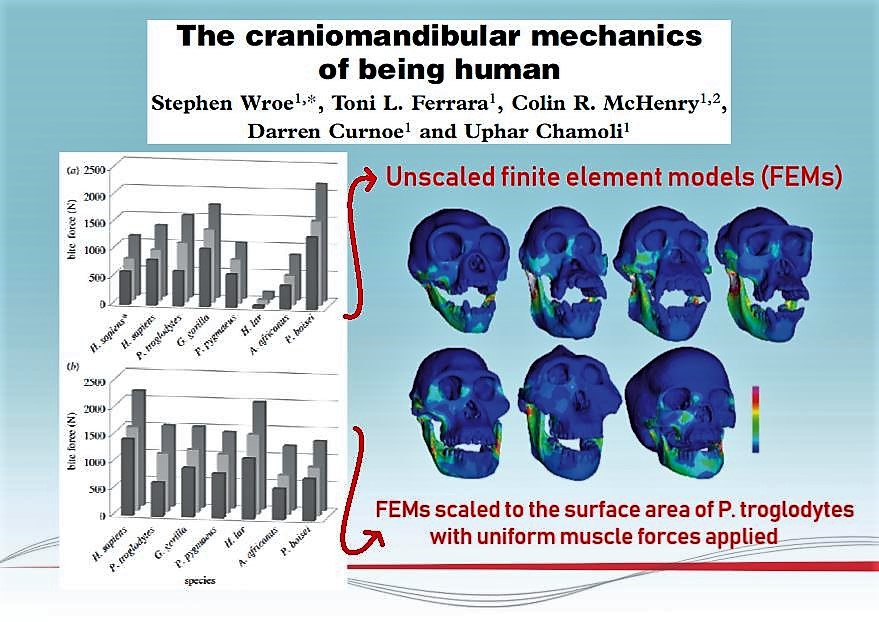The man and the strength of the bite
Title:
The craniomandibular mechanics of being human
Introduction:
Diminished bite force has been considered a defining feature of modern Homo sapiens, an interpretation inferred from the application of two-dimensional lever mechanics and the relative gracility of the human masticatory musculature and skull.This conclusion has various implications with regard to the evolution of human feeding behaviour.
Material and methods:
However, human dental anatomy suggests a capacity to withstand high loads and two-dimensional lever models greatly simplify muscle architecture, yielding less accurate results than threedimensional modelling using multiple lines of action. Here, to our knowledge, in the most comprehensive three-dimensional finite element analysis performed to date for any taxon, we ask whether the traditional view that the bite of H. sapiens is weak and the skull too gracile to sustain high bite forces is supported. We further introduce a new method for reconstructing incomplete fossil material.
Results:
Our findings show that the human masticatory apparatus is highly efficient, capable of producing a relatively powerful bite using low muscle forces. Thus, relative to other members of the superfamily Hominoidea, humans can achieve relatively high bite forces, while overall stresses are reduced.
Conclusions:
Our findings resolve apparently discordant lines of evidence, i.e. the presence of teeth well adapted to sustain high loads within a light weight cranium and mandible.
Practical tip:
We do not have to underestimate the ability to produce strength in our patients, even apparently fragile. Masticatory biomechanics is able to profit the muscle strength generating important pressures.

